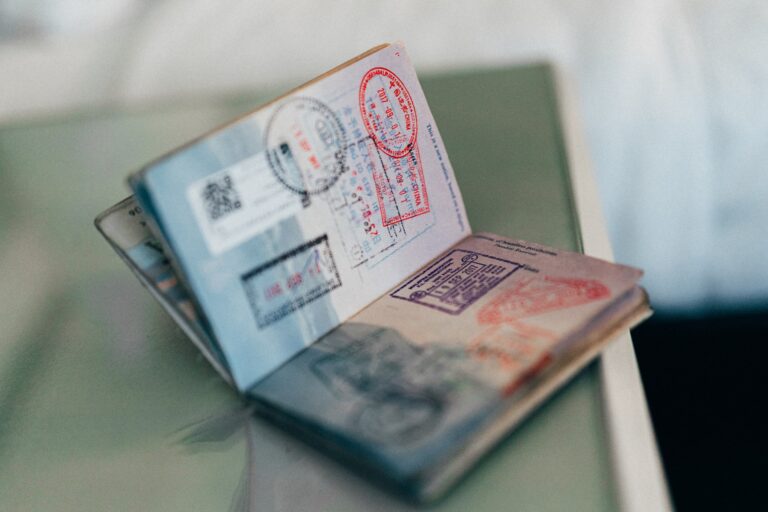The Ultimate Guide to Europe’s ETIAS Travel Authorization
If you’re planning to travel to Europe and you’re not a citizen of the European Union (EU), you may have heard about a new travel authorization system called ETIAS. But what exactly is ETIAS, and how will it affect your travel plans?
In short, ETIAS is a new electronic authorization system that will be mandatory for all non-EU citizens traveling to any of the 26 Schengen countries in Europe. Its purpose is to strengthen the security of the Schengen area by pre-screening travelers for potential security risks.
In this blog post, we’ll explore the details of the ETIAS system, including how to apply, how much it costs, and what you need to know before you travel to Europe.
Page Contents
What is ETIAS?
ETIAS, or the European Travel Information and Authorization System, is a new electronic travel authorization system that the European Union (EU) is implementing to enhance the security of the Schengen Area. The Schengen Area is a zone consisting of 26 European countries, where border checks have been abolished, allowing for free movement of people within the zone.
The purpose of ETIAS is to identify potential security risks before non-EU citizens enter the Schengen Area. This is achieved through a pre-screening process that checks the traveler’s personal information, including their name, address, and date of birth, as well as their passport details, against various security databases, such as Interpol and Europol.
The ETIAS system is expected to become operational by the end of 2023, and it will be mandatory for all non-EU citizens traveling to the Schengen Area. This includes travelers from countries that are currently exempt from obtaining a visa to enter the EU. It’s important to note that ETIAS is not a visa, but rather a travel authorization.
To apply for ETIAS, travelers will need to complete an online application form, providing basic personal information and answering security-related questions. The cost of the application is expected to be €7, and the authorization will be valid for three years, or until the traveler’s passport expires, whichever comes first.
It’s important to understand that ETIAS does not give travelers the right to work or study in the Schengen Area, nor does it allow them to stay for more than 90 days within a 180-day period. If a traveler plans to stay in the Schengen Area for longer than 90 days, or for purposes such as work or study, they will need to apply for a visa from the embassy or consulate of the country they plan to visit.
Is the ETIAS comparable with the ESTA?
Yes, the ETIAS (European Travel Information and Authorization System) and the ESTA (Electronic System for Travel Authorization) are similar in many ways and serve a similar purpose.
Both the ETIAS and ESTA are online systems that allow eligible travelers to obtain authorization to travel to certain countries without the need for a visa. The main difference is that the ETIAS is for travel to European Union countries and the Schengen area, while the ESTA is for travel to the United States.
The application process for both systems involves filling out an online form and providing personal and travel information. The authorization is typically granted quickly, often within minutes, and is valid for a specific period of time, usually up to two years.
It’s important to note that while the ETIAS and ESTA both allow for visa-free travel, they are not substitutes for a visa. Travelers who do not meet the eligibility criteria or who are planning to stay longer than the authorized period of time will need to apply for a visa through the regular process.
What is the Difference Between ETIAS and a Schengen Visa?
ETIAS and a Schengen visa are two different documents that are related to travel to the Schengen Area. While they both allow non-EU citizens to enter the zone, they serve different purposes and have different application processes.
The primary purpose of ETIAS is to enhance security in the Schengen Area by pre-screening non-EU citizens for potential security risks before they enter the zone. This is done through a pre-screening process that checks the traveler’s personal information, including their name, address, and date of birth, as well as their passport details, against various security databases, such as Interpol and Europol. The purpose of ETIAS is not to allow non-EU citizens to stay in the Schengen Area for an extended period, nor to work or study there. Instead, ETIAS is focused solely on ensuring the safety and security of the zone.
On the other hand, the purpose of a Schengen visa is to allow non-EU citizens to travel to and stay in the Schengen Area for a specific period of time for purposes such as tourism, business, study, or work. Schengen visas are issued by the embassy or consulate of the country that the traveler plans to visit. The application process for a Schengen visa is typically more complex than the process for obtaining an ETIAS authorization, and it can take several weeks or even months to obtain a visa.
In terms of the application process, to obtain an ETIAS authorization, non-EU citizens will need to complete an online application form, providing personal information and answering security-related questions. The process is relatively straightforward and should take only a few minutes to complete. The cost of the application is expected to be €7, and the authorization will be valid for three years, or until the traveler’s passport expires, whichever comes first.
On the other hand, applying for a Schengen visa requires the submission of several documents, such as a passport, proof of travel insurance, proof of accommodation, and an itinerary. The application process typically involves an in-person interview at the embassy or consulate of the country that the traveler plans to visit. The cost of a Schengen visa varies depending on the country and the type of visa requested, and it can be significantly higher than the cost of an ETIAS authorization.
Who Can Apply for ETIAS?
ETIAS is an online travel authorization that will be required for non-EU citizens who are traveling to the Schengen Area. The authorization will be mandatory for citizens of over 60 countries, including the United States, Canada, Australia, and Japan, among others. The full list of countries whose citizens will require an ETIAS authorization can be found on the official website of the European Union.
To apply for ETIAS, non-EU citizens will need to have a valid passport, a credit or debit card to pay the application fee, and an email address to receive the authorization. Additionally, they will need to provide personal information such as their full name, date of birth, and address, as well as their passport details, including the passport number, expiration date, and country of issuance. They will also be required to answer security-related questions, such as whether they have been convicted of a crime or have a history of drug abuse.
It is important to note that ETIAS is not a visa, and it will not allow non-EU citizens to stay in the Schengen Area for an extended period of time. Instead, it is a pre-screening process that is intended to enhance security in the zone by identifying potential security risks before they enter. Once the authorization is granted, it will be valid for three years, or until the traveler’s passport expires, whichever comes first. During this time, the traveler will be able to enter the Schengen Area multiple times, for stays of up to 90 days within any 180-day period.
How Much Does the ETIAS Application Cost?
The cost of the ETIAS application is €7 for applicants who are over the age of 18. However, minors under the age of 18 are exempt from the fee, and their applications will be processed free of charge. The fee can be paid using a credit or debit card, and it is non-refundable, even if the application is denied.
It is worth noting that the €7 fee is only the processing fee for the ETIAS application. Travelers may also incur additional costs associated with their trip, such as airfare, lodging, and transportation. Additionally, travelers who plan to visit multiple countries within the Schengen Area may be subject to additional fees and requirements depending on the specific countries they plan to visit.
In general, the cost of traveling to the Schengen Area can vary greatly depending on a number of factors, such as the length of stay, the purpose of the trip, and the country of origin. It is recommended that travelers budget accordingly and research the specific requirements and fees associated with their trip before applying for ETIAS.
How to Apply for ETIAS?
The application process for ETIAS is simple and can be completed entirely online. The following is a step-by-step guide on how to apply for ETIAS:
- Gather required documents: Before starting the application process, make sure you have a valid passport, a credit or debit card to pay the application fee, and an email address to receive the authorization.
- Go to the official ETIAS website: Visit the official ETIAS website and select your language preference.
- Start the application: Click on the “Apply” button and start the application process. You will be prompted to provide personal information, such as your full name, date of birth, and address.
- Provide passport details: You will also need to provide your passport details, including the passport number, expiration date, and country of issuance.
- Answer security-related questions: You will be required to answer security-related questions, such as whether you have been convicted of a crime or have a history of drug abuse.
- Pay the application fee: Once you have completed the application, you will be prompted to pay the €7 processing fee using a credit or debit card.
- Submit the application: After paying the fee, review your application for accuracy, and then submit it. You will receive an email confirming that your application has been received and is being processed.
- Wait for authorization: Once your application has been processed, you will receive an email with the decision on your authorization. In most cases, the authorization will be granted within minutes of submitting the application. However, it is recommended that you apply for ETIAS at least 72 hours before your departure to allow for any processing delays.
In summary, applying for ETIAS is a straightforward process that can be completed entirely online. Applicants will need to provide personal information, passport details, and answer security-related questions, as well as pay a €7 processing fee using a credit or debit card. Once the application is submitted, applicants will receive an email confirming receipt and will be notified of the decision on their authorization within minutes in most cases.
How Long Does the ETIAS Process Take?
In most cases, the ETIAS application process takes only a few minutes to complete. After submitting the application, travelers can expect to receive a decision on their authorization within minutes via email.
However, it is important to note that the processing time may be longer if additional information is required or if there are technical issues with the application. In some cases, the application may be delayed for up to four weeks, so it is recommended that travelers apply for ETIAS at least 72 hours before their departure.
What if My ETIAS Application is Not Approved?
If your ETIAS application is not approved, you will receive an email with the decision and the reason for the denial. In most cases, the reason for denial will be related to security concerns, such as a criminal record or history of visa violations.
If your application is denied, you may still be able to travel to Europe by applying for a traditional Schengen visa. However, the Schengen visa application process is more time-consuming and requires additional documentation.
If you believe that your ETIAS application was denied in error, you may be able to appeal the decision. The appeal process varies by country and will be outlined in the denial email that you receive. In most cases, you will be required to submit additional documentation to support your appeal.
It is important to note that the ETIAS application fee is non-refundable, even if your application is denied. Therefore, it is recommended that you review the eligibility requirements carefully and ensure that all information provided in your application is accurate and complete.
How Long is My ETIAS Valid for?
The ETIAS (European Travel Information and Authorization System) authorization is valid for three years from the date of approval or until the expiration of the passport used in the application, whichever comes first. This means that travelers can use their ETIAS authorization to visit any of the Schengen countries multiple times during the three-year period, as long as their passport remains valid.
It is important to note that the maximum stay allowed with an ETIAS authorization is 90 days within a 180-day period. This means that travelers cannot stay in the Schengen Area for more than 90 days during any 180-day period, even if they have a valid ETIAS authorization.
If a traveler’s passport expires before the three-year validity period of the ETIAS authorization, they will need to apply for a new authorization with their new passport information. This process is similar to applying for a new ETIAS authorization, but the traveler will need to provide their updated passport information and any other relevant details.
Does an ETIAS Approval Guarantee Entry into the Schengen Area?
No, an ETIAS (European Travel Information and Authorization System) approval does not guarantee entry into the Schengen Area. The ETIAS authorization is a pre-screening process that assesses the eligibility of travelers to enter the Schengen Area based on security and immigration criteria.
Once a traveler arrives at a Schengen Area border checkpoint, the border officials have the authority to deny entry based on their own assessment of the traveler’s information and circumstances. Border officials may ask additional questions, request additional documents, or deny entry if they believe the traveler poses a security risk or does not meet the entry requirements.
Therefore, it is important to note that the ETIAS authorization is not a substitute for a visa or any other travel document required for entry into the Schengen Area. Travelers should ensure that they have all the necessary documentation and meet the entry requirements before traveling to the Schengen Area.







